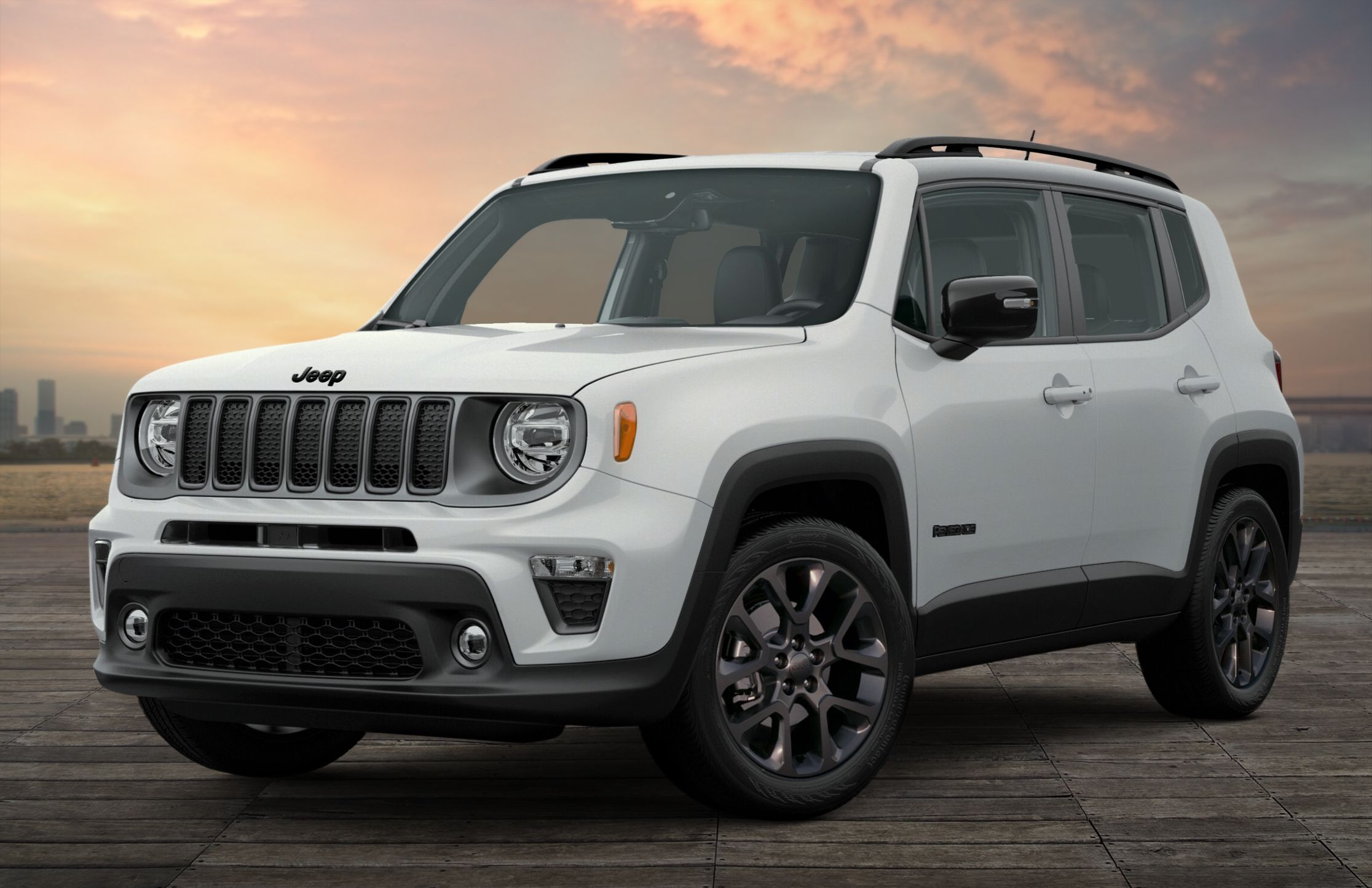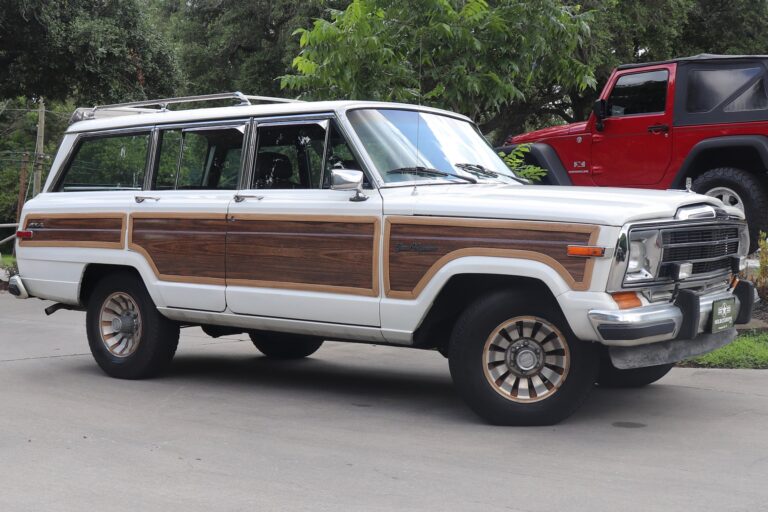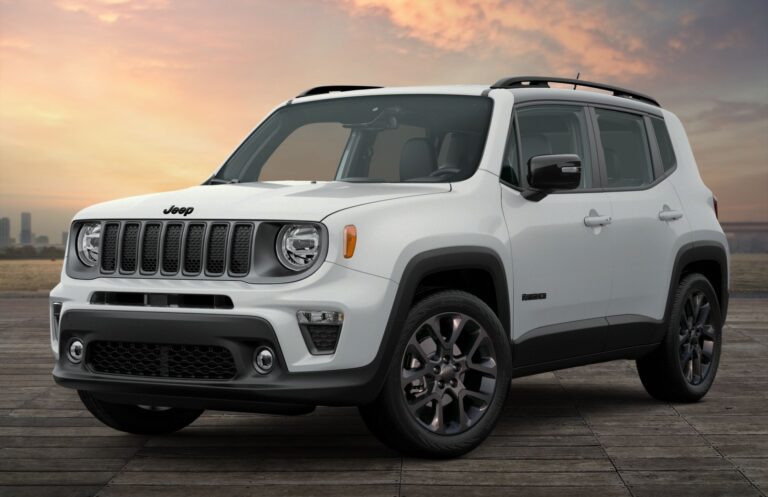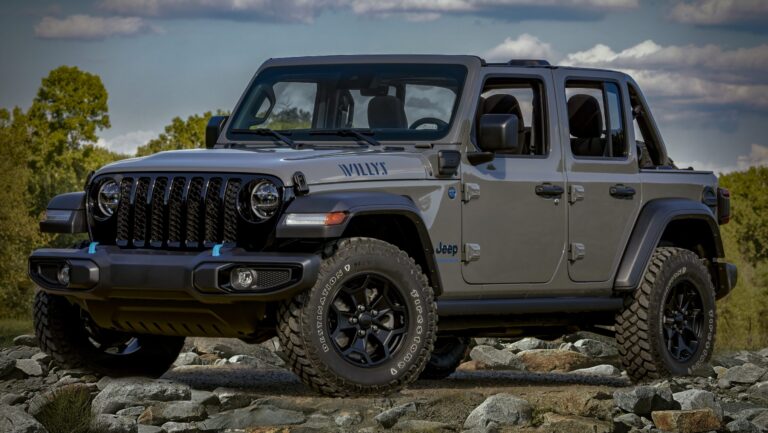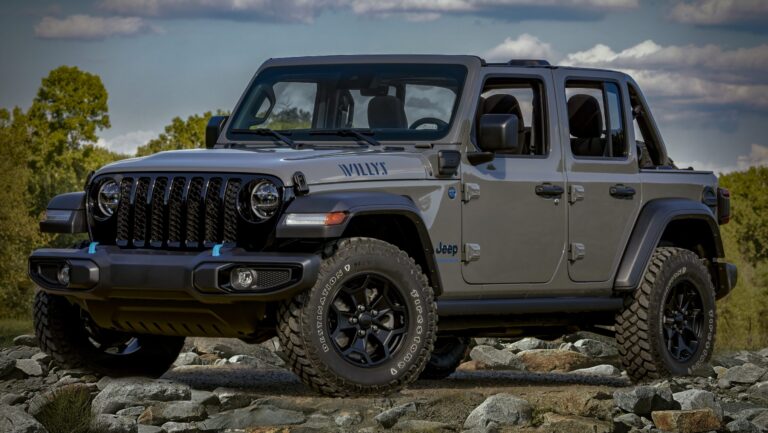Jeep Snorkel For Sale: Your Ultimate Guide to Enhanced Off-Roading
Jeep Snorkel For Sale: Your Ultimate Guide to Enhanced Off-Roading jeeps.truckstrend.com
For the intrepid Jeep owner, the call of the wild often leads to paths less traveled – paths that frequently involve water crossings, dusty trails, and challenging terrain. While Jeeps are inherently capable off-road machines, there’s one accessory that can significantly elevate their performance and protect their vital components: the snorkel. If you’ve ever found yourself eyeing deeper puddles with a mix of excitement and trepidation, or constantly cleaning your air filter after a dusty expedition, then a "Jeep Snorkel For Sale" is likely on your radar.
A Jeep snorkel, often referred to as a "raised air intake," is an aftermarket accessory designed to reposition your vehicle’s engine air intake from its original low-lying location to a much higher point, typically near the top of the windshield or along the A-pillar. This seemingly simple modification serves a critical purpose: it allows your engine to draw in cleaner, drier air, safeguarding it from the detrimental effects of water ingestion during deep water crossings and reducing the intake of dust and debris in arid environments. It’s not just about wading through rivers; it’s about extending the life of your engine, maintaining optimal performance, and expanding your off-road horizons with confidence.
Jeep Snorkel For Sale: Your Ultimate Guide to Enhanced Off-Roading
Understanding the Jeep Snorkel: More Than Just a Tube
At its core, a Jeep snorkel is a specialized air intake system. It typically consists of several key components:
- The Ram Head (or Air Ram): This is the visible, often mushroom-shaped or forward-facing intake scoop at the top of the snorkel. Its design is crucial for efficiently drawing in air while shedding water and debris. Some modern designs incorporate cyclonic pre-filters for even better dust separation.
- The Intake Pipe: This is the main tube that runs from the ram head down to your Jeep’s engine bay. It’s designed to be robust, UV-resistant, and provide a smooth, unobstructed path for air.
- Connection Hoses and Adapters: These pieces connect the snorkel pipe to your Jeep’s existing airbox or directly to the engine’s intake manifold, ensuring a sealed, airtight system.
- Mounting Hardware: Brackets, clamps, and fasteners secure the snorkel firmly to the vehicle’s body, usually along the fender and A-pillar.

The Benefits of Installing a Snorkel:
- Hydrostatic Lock Prevention: This is the primary reason most off-roaders consider a snorkel. If water enters your engine’s intake and reaches the cylinders, it can cause catastrophic damage (hydrostatic lock) because water is incompressible. A snorkel keeps the air intake above the waterline, dramatically reducing this risk during water fording.
- Dust and Debris Protection: In dusty environments, a lower air intake can quickly clog your air filter and allow fine particulates into your engine, leading to premature wear. A snorkel draws air from a higher, less turbulent zone, often cleaner and cooler, extending filter life and engine health.
- Improved Air Quality (Minor): While not a performance upgrade in the traditional sense, drawing air from higher up can sometimes provide slightly cooler, denser air, which can marginally benefit combustion efficiency, especially in hot, dusty conditions.
- Engine Longevity: By protecting your engine from water and excessive dust, a snorkel directly contributes to its long-term health and reliability.
- Aesthetics and Capability Statement: Let’s be honest, a snorkel looks undeniably rugged and capable, instantly signaling that your Jeep is ready for serious adventure.

Types of Jeep Snorkels: Finding Your Perfect Fit
When exploring "Jeep Snorkel For Sale" options, you’ll encounter variations primarily in material, design, and vehicle compatibility.

- Material:
- LLDPE (Linear Low-Density Polyethylene): This is the most common material due to its exceptional strength, flexibility, UV resistance, and impact absorption. It’s durable and maintains its color well.
- ABS Plastic: Another robust option, often used for molded components, offering good rigidity and finish.
- Metal (Steel/Aluminum): Less common for the main intake pipe due to weight and thermal conductivity, but sometimes used for custom fabrication or specific components.
- Design and Mounting:
- Fender/A-Pillar Mount (Most Common): These kits are designed to follow the contour of your Jeep’s fender and then run up the A-pillar to the roofline. They are robust and offer excellent water-fording depth.
- Inner Fender/Stealth Snorkels: Some designs are less visible, running up inside the fender or cowl. While offering some protection, their maximum water depth capability might be limited compared to external designs, and installation can be more complex.
- Universal vs. Vehicle-Specific: While "universal" snorkels exist, most reputable options for Jeeps are vehicle-specific (e.g., for JK, JL, TJ, XJ, YJ models). This ensures proper fitment, sealing, and integration with your Jeep’s unique body lines and engine bay layout.
- Brands: The market offers several reputable brands known for quality and fitment, including Safari Snorkels (ARB), AEV (American Expedition Vehicles), Rugged Ridge, Smittybilt, and more. Each may offer slightly different designs, materials, and price points.
Key Considerations Before Your Purchase
Before committing to a "Jeep Snorkel For Sale" option, ponder these crucial factors to ensure you make the right choice for your rig and your adventures:
- Jeep Model and Year Specificity: This is paramount. A snorkel designed for a Jeep JK will not fit a JL or a TJ. Always double-check the product’s compatibility with your exact Jeep model, year, and even engine type (e.g., 3.6L Pentastar vs. 3.8L).
- Installation Difficulty and Tools: Be prepared for a significant installation. Most snorkels require cutting into your Jeep’s fender and potentially drilling into the A-pillar. While many DIYers tackle it, it’s a permanent modification that requires precision. If you’re not comfortable with bodywork, factor in professional installation costs.
- Material Quality and Durability: Look for snorkels made from high-quality LLDPE that is UV-stabilized to prevent fading and cracking over time. Robust mounting hardware is also essential for stability.
- Airflow Design and Sealing: A well-designed snorkel maintains optimal airflow to your engine without creating excessive restriction. Crucially, the entire system must be completely sealed from the ram head down to the airbox to prevent water from entering. Check for robust gaskets and sealing components.
- Legality and Regulations: Some regions or countries have regulations regarding vehicle modifications, particularly those that alter vehicle dimensions or obstruct visibility (though snorkels rarely pose a major visibility issue). It’s wise to check local laws before installation.
- Maintenance: Snorkels are generally low maintenance, but you’ll need to periodically check the ram head for debris and ensure all connections remain sealed, especially after tough trails.
- Warranty Implications: While generally not a major issue, it’s worth noting that some dealerships might scrutinize aftermarket modifications if an engine issue arises that could potentially be linked to the snorkel (e.g., water ingress due to improper installation). However, a properly installed snorkel usually poses no warranty threat.
The Installation Process: A Brief Overview
Installing a Jeep snorkel is a rewarding but involved process, often requiring patience and precision. While a detailed step-by-step guide is beyond the scope of this article (always follow the manufacturer’s specific instructions), here’s a general overview:
- Preparation: Gather all necessary tools (drill, hole saw, cutting tools for fender, wrenches, sealant, masking tape, marker). Disconnect the battery.
- Template Application: Most snorkel kits come with a precise template. This is crucial for marking the exact locations for drilling and cutting on your fender and A-pillar.
- Fender Cutting and Drilling: This is the most nerve-wracking step. Carefully cut the necessary opening in your fender for the snorkel pipe and drill mounting holes. Take your time and measure twice, cut once!
- Airbox Modification: You’ll likely need to modify your existing airbox or its connection to accommodate the snorkel’s intake hose. This often involves removing the original low-lying intake duct.
- Connecting and Sealing: Route the snorkel pipe through the fender opening and connect it securely to the airbox. Crucially, apply a high-quality sealant (like silicone RTV) around all connections, especially where the snorkel pipe enters the airbox, to ensure an airtight, watertight seal.
- Mounting the Snorkel: Secure the snorkel pipe to the A-pillar using the provided brackets and hardware. Ensure it’s straight, snug, and doesn’t interfere with door operation or visibility.
- Final Checks: Reconnect the battery. Inspect all connections for tightness and proper sealing. Run the engine briefly to ensure no immediate issues.
If you’re unsure about any step, or uncomfortable with cutting into your Jeep’s body, it’s highly recommended to seek professional installation from an experienced off-road shop.
Maximizing Your Investment: Tips for Using Your Snorkel
Having a snorkel doesn’t make your Jeep an amphibious vehicle; it simply extends its capabilities for water crossings. Here are tips for getting the most out of your snorkel:
- Know Your Limits: A snorkel protects your engine’s air intake, but your Jeep has many other vulnerable components: differentials, transmission, transfer case, electrical systems, and cabin electronics. These can still be damaged by water. Research your Jeep’s maximum safe fording depth, which is typically well below the top of the snorkel.
- Slow and Steady: When crossing water, proceed slowly and steadily to create a bow wave that pushes water away from your engine bay. Avoid sudden stops or accelerating, which can cause water to wash over the hood.
- Check Water Depth: Always walk or wade through unknown water crossings to assess depth, current, and submerged obstacles before driving through.
- Post-Fording Checks: After any significant water crossing, check your differentials, transmission, and transfer case for water ingress (milky oil indicates contamination). Check electrical connections for moisture and dry them if necessary.
- Regular Maintenance: Periodically inspect your snorkel’s ram head for blockages (leaves, mud) and ensure all mounting points and seals are secure.
Potential Challenges and Solutions
While highly beneficial, installing and using a snorkel can present minor challenges:
- Installation Difficulty: As mentioned, cutting and drilling can be daunting. Solution: Hire a professional if you’re not confident.
- Wind Noise: Some snorkel designs or improper installation can lead to increased wind noise, especially at highway speeds. Solution: Choose a reputable brand with aerodynamic design, ensure proper sealing, and check for loose components.
- Aesthetics: The prominent nature of a snorkel isn’t for everyone. Solution: Consider inner fender or stealth options if available for your model, or simply embrace the rugged look!
- Reduced Visibility: While minimal, a snorkel can slightly obstruct your view, especially on the passenger side A-pillar. Solution: Adjust your driving position and mirrors, and get accustomed to its presence.
- Engine Check Light/Performance Issues: If the snorkel system isn’t perfectly sealed, it can create a vacuum leak or affect sensor readings, leading to a check engine light or minor performance issues. Solution: Meticulous sealing during installation is crucial. Use high-quality sealant and re-check all connections.
Jeep Snorkel For Sale: Price Guide
The market for Jeep snorkels is diverse, with prices varying based on brand, material quality, Jeep model specificity, and included features. Here’s a general price table to give you an idea of what to expect:
| Product / Brand | Jeep Model Compatibility | Material | Key Features | Estimated Price Range (USD) |
|---|---|---|---|---|
| Safari Snorkel (ARB) | JK, JL, TJ, XJ, YJ | LLDPE | Premium quality, vehicle-specific, highly durable, optimized airflow, UV stable. Considered a gold standard. | $450 – $750 |
| AEV Snorkel Kit | JK, JL (specific years) | LLDPE | Integrates with AEV’s hood (often), robust design, excellent fit and finish, OE-level quality. | $400 – $650 |
| Rugged Ridge Snorkel | JK, JL, TJ, XJ | LLDPE | Durable construction, often includes pre-cleaner option, good value, comprehensive kits. | $300 – $550 |
| Smittybilt XRC Snorkel | JK, JL | LLDPE/ABS | Aggressive styling, competitive pricing, designed for XRC fender flares (can be adapted), good for budget-conscious buyers. | $250 – $450 |
| Rough Country Snorkel | JK, JL | LLDPE | Cost-effective option, decent quality, often includes all necessary hardware. | $200 – $400 |
| Generic/Off-Brand Snorkels | Various (check fitment) | LLDPE/ABS | Entry-level pricing, variable quality, may require more customization during installation. | $150 – $300 |
Note: Prices are estimates and can fluctuate based on retailer, promotions, and specific model variations. Installation costs (if professional) are separate.
Frequently Asked Questions (FAQ)
Q1: Is a snorkel necessary for off-roading?
A1: Not strictly necessary for all off-roading, but highly recommended if you plan to tackle water crossings of significant depth or frequently drive in extremely dusty conditions. It offers crucial engine protection that can prevent costly damage.
Q2: Does a snorkel increase horsepower?
A2: Generally, no. A snorkel’s primary purpose is protection and cleaner air intake, not performance enhancement. While drawing cooler air might offer a marginal benefit in some conditions, it’s not a performance modification like a cold air intake.
Q3: Will installing a snorkel void my warranty?
A3: A properly installed snorkel should not void your entire vehicle warranty. However, if an engine issue arises that can be directly attributed to the snorkel (e.g., improper installation leading to water ingress), the specific repair might not be covered. Always check with your dealership.
Q4: Can I install a snorkel myself?
A4: Yes, many DIY enthusiasts install snorkels. However, it involves cutting and drilling into your Jeep’s body, which is a permanent modification. If you’re not comfortable with precision work and sealing, professional installation is advisable.
Q5: What’s the difference between a snorkel and a cold air intake?
A5: A cold air intake (CAI) focuses on maximizing airflow and drawing cooler, denser air for performance gains, usually within the engine bay. A snorkel’s primary goal is to raise the air intake point to protect the engine from water and dust, not necessarily to increase horsepower.
Q6: Are all snorkels the same?
A6: No. Snorkels vary significantly in material quality, design, vehicle-specific fitment, and the quality of included hardware and sealing components. Reputable brands generally offer superior fit, finish, and durability.
Q7: How deep can I go with a snorkel?
A7: A snorkel only raises the air intake. Your Jeep’s maximum safe fording depth is determined by the lowest vulnerable component (e.g., differential breathers, transmission/transfer case vents, electronics). A snorkel allows you to reach that maximum depth without hydro-locking the engine, but it doesn’t make your Jeep a submarine. Always research your specific Jeep model’s safe fording depth.
Conclusion
A "Jeep Snorkel For Sale" represents more than just an aftermarket accessory; it’s an investment in your vehicle’s longevity and your off-road confidence. By safeguarding your engine from water and dust, a snorkel unlocks new levels of adventure, allowing you to explore more challenging terrains without the constant worry of hydrostatic lock or premature engine wear.
While installation requires careful consideration and execution, the benefits for serious off-roaders are undeniable. From the peace of mind during a deep water crossing to the reduced maintenance on dusty trails, a well-chosen and properly installed snorkel truly enhances the spirit of freedom and capability that defines the Jeep experience. So, whether you’re a seasoned overlander or an aspiring trail conqueror, exploring the available snorkel options for your Jeep is a powerful step towards unlocking your next great adventure.

